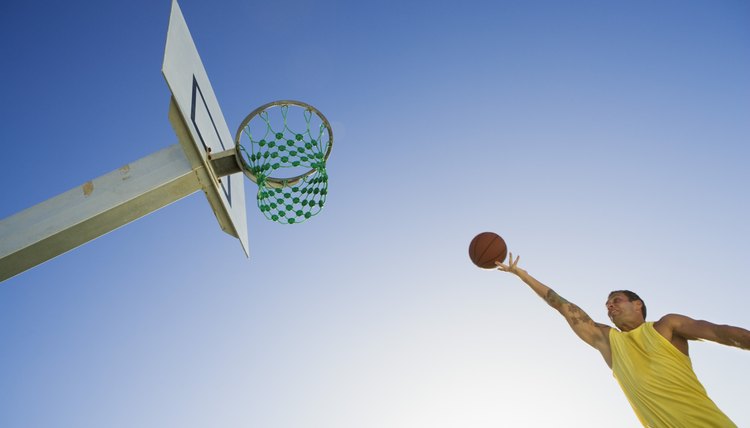Muscles Involved in the Vertical Leap

Vertical jumps are essential for many different types of sports and physical activities. Exercise specialists often test vertical jump height to measure an athlete’s lower-body power. In this test, you stand next to a wall and reach one hand as high up the wall as possible. Then, you jump as high as possible. The specialist measures the difference between the two heights to determine your vertical jumping ability.
Types of Vertical Jumps
Different trainers prefer different types of approaches for vertical leaps. Some prefer you to begin from a squat. Others prefer you to begin with your legs straight and execute a dynamic squat or knee bend before the jump. Others allow you to take several steps before the jump. Regardless of your approach to the jump, and whether you are allowed to swing your arms or not, the muscles that actually produce the jump remain the same.
Hip Extensors
The hip extensors work in a vertical jump to extend the hip after the initial squat. These muscles include the gluteus maximus and the hamstrings. Of these muscles, the gluteus maximus has the most impact on the jump. The hamstrings are two-joint muscles. In addition to extending the hip, they work to bend the knee. Because knee flexion is not involved in a vertical jump -- in fact, the opposite movement, knee extension, is necessary -- the role of the hamstrings is likely less important.
Knee Extensors
The knee extensors work to straighten the knee as you perform a vertical jump. The primary muscle group responsible for knee extension is the quadriceps. Of these four muscles, the vastus medialis, lateralis and intermedius are the most important in the vertical jump. The fourth muscle, the rectus femoris, also attaches to the hip where it is responsible for hip flexion. Because vertical jumping requires hip extension, and not hip flexion, the rectus femoris is likely less active.
Ankle Plantarflexors
While the gluteus maximus and three of the quadriceps muscles produce most of the power for the vertical jump, the muscles in the calf help out just before your feet leave the ground. The gastrocnemius and soleus plantarflex, or point, the ankle to provide additional power for the jump.
References
Writer Bio
Kat Black is a professional writer currently completing her doctorate in musicology/ She has won several prestigious awards for her research, and has had extensive training in classical music and dance.
